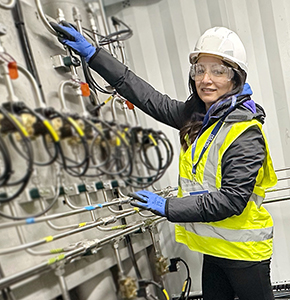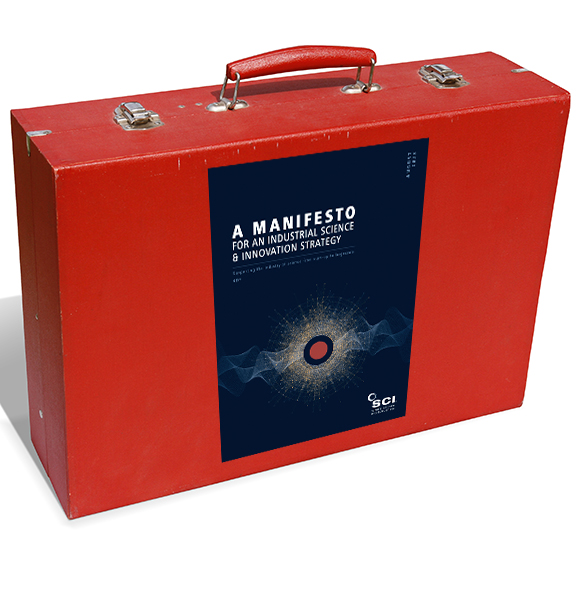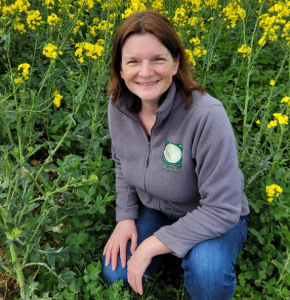8 Nov 2011
The production of ethanol from lignocellulose-rich materials such as wood residues, waste paper, used cardboard and straw cannot yet be achieved at the same efficiency and cost as from corn starch. A cost comparison has concluded that using lignocellulose materials is unlikely to be competitive with starch until 2020 at the earliest. The study, published in the international journal Biofuels, Bioproducts & Biorefining, did identify many opportunities for reducing costs and improving income within the lignocellulose-to-ethanol process, and provides insight into the priority areas that must be addressed in coming years.
Ethanol can be blended with gasoline to reduce our dependency on fossil fuels. The last 15 years has seen a massive growth of so-called first-generation processes that use enzymes and bacteria to turn the starch and sugars in corn and sugarcane into ethanol. But corn and sugarcane are also important components of the human food web, so using them for ethanol production has the potential to affect the price and availability of these basic commodities.
On the other hand, lignocellulose materials are often hard to dispose of, but they are rich in sugars that can be fermented into ethanol following appropriate processing. 'Not only is cellulose the most abundant polymer on Earth, it cannot be digested by humans, so using it for fuel production does not compete directly with food supplies,' says the study's lead author Jamie Stephen, who works in the Department of Wood Science at the University of British Columbia in Vancouver, Canada. The race is on to commercialise this second generation ethanol.
Stephen's work focuses on the fact that the cost of building large scale ethanol-producing facilities will likely be higher for second generation ethanol compared to first generation technologies. One reason is that sources of lignocellulose may require significant and costly pre-treatment. 'Researchers and companies are going to have to concentrate on reducing the cost of pretreatment and increasing the output of the digester in order to reduce the costs of the lignocellulose-to-ethanol process,' says Stephen.
Another reason costs are higher is that lignocellulose is made of multiple kinds of sugar, while corn starch consists of pure glucose. Corn starch can be reduced to glucose with low-cost amylase enzymes, while pre-treated lignocellulose requires a cocktail of cellulase enzymes. Providing these enzymes is one of the major costs of the whole process, but you currently need 12 times more cellulase than amylase protein to generate the same amount of ethanol from woody biomass. 'Despite much effort and progress over the last few years, the cost of using cellulase enzymes is still significantly higher than for amylase-based processes, and will need to be reduced substantially before lignocellulose starts to become competitive with corn and sugarcane as a feedstock,' says Stephen.
Finally, while the input to sugarcane and corn starch-based systems is fairly constant, the feedstocks that go into lignocellulose systems are much more variable. Different species of tree produce wood that has different properties, and waste paper and agricultural wastes will have many different types of material in them. To get maximum efficiency, each type of biomass needs to be processed under different conditions, which introduces another challenge for anyone wanting to make ethanol from these materials.
Overall, Stephen believes we have a considerable way to go before second-generation ethanol production will be ready for commercialisation. 'Production requires significant cost reductions and at least the same level of financial support that was given to the first-generation systems if second-generation ethanol is going to be fully competitive by 2020,' says Stephen.
- ends -
Media Contacts: Michelle Martella (US) +1 781-388-8577 Jennifer Beal (UK) +44 (0)1243 77633 physicalsciencenews@wiley.com
This study is published in Biofuels, Bioproducts & Biorefining. Media wishing to receive a PDF of this article may contact physicalsciencenews@wiley.com
Full Citation: 'Will Second-Generation Ethanol be able to Compete with First-Generation Ethanol? Opportunities for Cost Reduction.' James D Stephen, Warren E Mabee and Jack N Saddler. Biofuels, Bioproducts & Biorefining; 2011 DOI: 10.1002/bbb.331 URL upon publication: http://doi.wiley.com/10.1002/bbb.331
About the Authors:
- Jamie Stephen, BSc, MSc, is a PhD candidate at the University of British Columbia, Canada, working on a thesis on the competitiveness of lignocellulosic ethanol. He is also the Managing Director of TorchLight Bioresources, a bioenergy consulting company. Mr. Stephen previously worked for several years at a national research foundation in Canada managing bioenergy technology research investments. He is a Fellow at the Queen's Institute for Energy and Environmental Policy (QIEEP).To arrange an interview, please contact: Heather Amos, UBC Public Affairs on heather.amos@ubc.ca.
- Dr Warren Mabee is an Assistant Professor at Queen's University with appointments in Geography and Policy Studies. His main specialty is bioenergy technology and policy, and the role of transformative technologies in revitalising the Canadian forest sector. He is also Director of Queen's Institute for Energy and Environmental Policy.
- Dr Jack Saddler is the Professor of Forest Products Biotechnology/Bioenergy at UBC, is the Task Co-Leader for IEA Bioenergy Task 39 (Liquid Biofuels), and has been working in the bioenergy area for over 25 years. He is Fellow of the Royal Society of Canada and is the recipient of the Charles D Scott Award and IUFRO's Scientific Achievement Award.
About the Journal
Biofuels, Bioproducts & Biorefining is an exciting new review and commentary journal published as a cooperative venture of SCI and John Wiley & Sons, Ltd. More
About SCI
SCI is a unique international forum where science meets business on independent, impartial ground. Anyone can join where they can share and exchange information, ideas, new innovations and research and access SCI's growing database of member specialists between sectors as diverse as food and agriculture, pharmaceuticals, biotechnology, environmental science and safety. Originally established in 1881, SCI is a registered charity with members in over 70 countries. For more information on SCI activities and publications, click here.
About Wiley
Wiley is the international scientific, technical, medical, and scholarly publishing business of John Wiley & Sons, with strengths in every major academic and professional field and partnerships with many of the world's leading societies. Wiley publishes nearly 1,500 peer-reviewed journals and 1,500+ new books annually in print and online, as well as databases, major reference works and laboratory protocols. For more information, please visit our new online platform, Wiley Online Library (www.wileyonlinelibrary.com), one of the world's most extensive multidisciplinary collections of online resources, covering life, health, social and physical sciences, and humanities.








